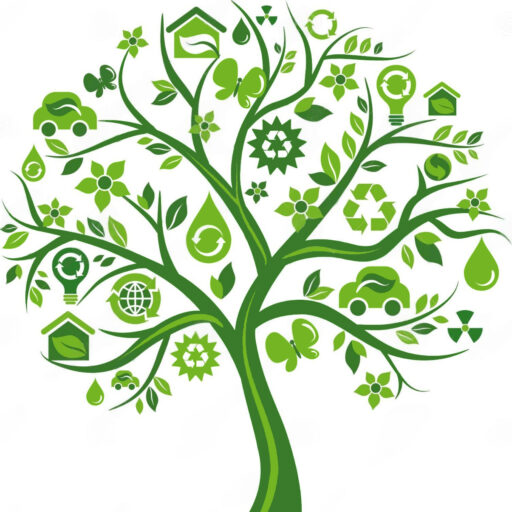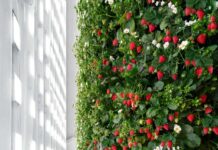Introduction
In the evolving narrative of sustainable living and ecohousing, few names resonate as profoundly as that of Michael Reynolds. Known as the pioneer behind the Earthship concept, Reynolds has spent decades redefining the principles of architecture and environmental stewardship. His innovative Earthship buildings are not merely structures but a manifesto for a self-sufficient and eco-friendly lifestyle. This article delves into the life and work of Michael Reynolds, exploring the genesis, philosophy, and global impact of Earthships. We will examine the development of his ideas, the technical and ecological innovations that underpin Earthships, the community and educational initiatives that have grown around this movement, and the broader implications of Reynolds’ work for sustainable living and architectural practices worldwide.
The Genesis of a Visionary: Michael Reynolds
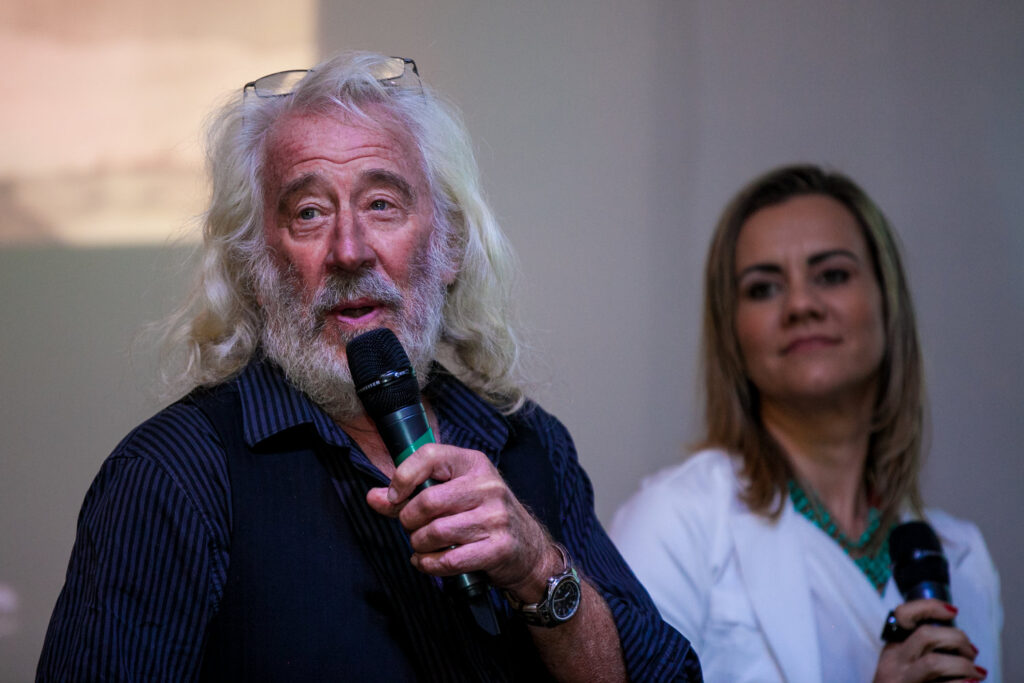
Michael Reynolds, an architect driven by a deep concern for environmental degradation and resource depletion, has been an ardent advocate for sustainable architecture since the early 1970s. Born in 1945 in Louisville, Kentucky, Reynolds graduated from the University of Cincinnati with a degree in architecture. However, he quickly grew disillusioned with conventional architectural practices, which he found disconnected from the pressing environmental issues of the time.
Reynolds’ dissatisfaction led him to question the fundamental principles of building design and construction. He envisioned structures that could exist in harmony with nature, utilizing local and recycled materials, harnessing renewable energy, and providing self-sustenance in water, food, and energy. This vision laid the foundation for what would become the Earthship movement. His early exposure to the environmental movement of the 1960s and 70s, including the publication of “The Limits to Growth” by the Club of Rome and the first Earth Day in 1970, profoundly influenced his thinking.
The Birth of Earthships
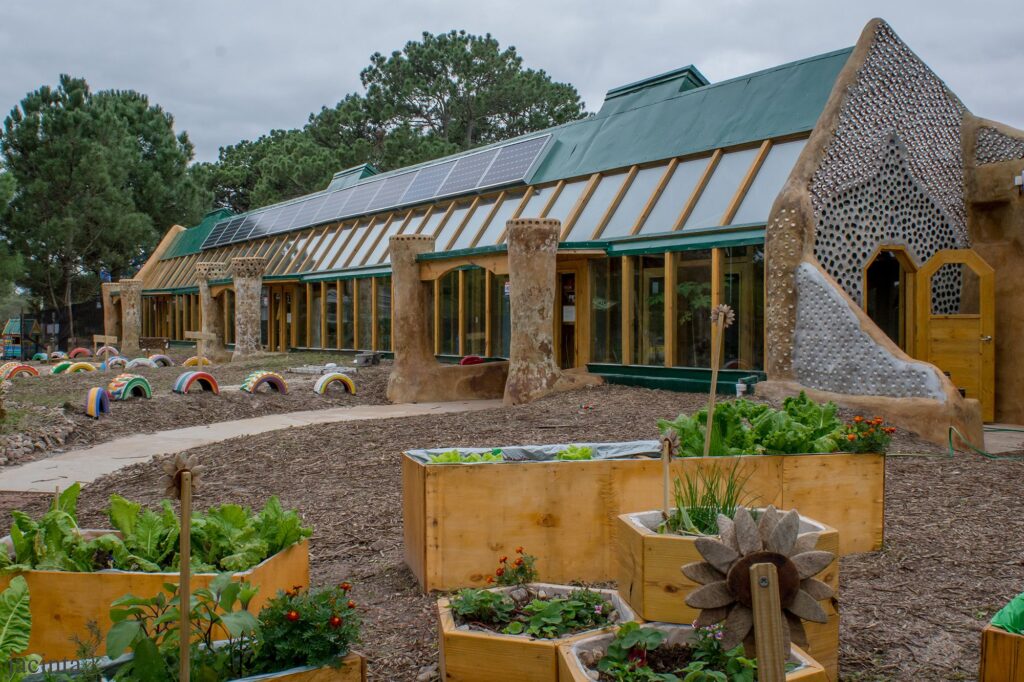
The term “Earthship” was coined by Reynolds to describe a type of passive solar house made of natural and upcycled materials, such as earth-packed tires, bottles, and cans. The concept was revolutionary, challenging traditional building methods and advocating for a paradigm shift towards sustainable living. Reynolds’ first Earthship prototypes emerged in the arid landscape of Taos, New Mexico. These early models were experimental, often rough around the edges, but they embodied the core principles that would define Earthships: self-sufficiency, resilience, and minimal environmental impact.
As Reynolds refined his designs, he introduced several key features that are now synonymous with Earthships. His early work included extensive experimentation with different materials and construction techniques, often learning through trial and error. The community in Taos provided a supportive backdrop for these experiments, with many locals interested in alternative lifestyles and sustainable living practices.
Core Principles and Features of Earthships
- Thermal Mass and Passive Solar Heating
Earthships are designed to maximize thermal mass, which helps regulate indoor temperatures. Thick walls made from earth-packed tires absorb and store heat during the day, releasing it slowly at night. This passive solar heating reduces the need for external heating sources, making Earthships highly energy-efficient. The design takes advantage of the sun’s position, with large south-facing windows to capture sunlight and internal walls and floors that absorb and radiate heat. - Natural and Recycled Materials
One of the most distinctive aspects of Earthships is the use of natural and recycled materials. Tires filled with compacted earth form the primary structural walls, while bottles and cans are used for non-load-bearing walls and decorative elements. This not only reduces construction costs but also repurposes waste materials that would otherwise end up in landfills. Reynolds’ use of these materials was initially met with skepticism, but their effectiveness in creating durable, insulated structures has since been well-documented. - Water Harvesting and Management
Water is a precious resource, especially in arid regions. Earthships incorporate systems for harvesting rainwater, which is collected on the roof, filtered, and stored in cisterns. This water is then used for drinking, cooking, and bathing. Greywater from sinks and showers is reused for irrigation, while blackwater is treated and composted for use in gardens. The water management system is designed to ensure that water is used as efficiently as possible, reducing the demand on external water supplies. - Renewable Energy
Earthships are designed to be off-grid, utilizing renewable energy sources such as solar and wind power. Photovoltaic panels and wind turbines generate electricity, which is stored in batteries for use during periods of low sunlight or wind. This ensures a continuous supply of clean energy, reducing reliance on fossil fuels. The integration of renewable energy systems is central to the Earthship philosophy of self-sufficiency and environmental responsibility. - Food Production
A key aspect of Earthship design is the integration of food production systems. Indoor and outdoor gardens, often utilizing hydroponic and aquaponic methods, allow residents to grow a significant portion of their own food. This not only reduces the carbon footprint associated with food transportation but also promotes a healthier, more sustainable diet. The gardens are usually located in the greenhouse areas of the Earthship, benefiting from the controlled indoor climate and recycled water systems. - Waste Management
Earthships address waste management through composting toilets and greywater recycling systems. Human waste is composted to create nutrient-rich soil for gardens, while greywater is filtered through plant beds and used to water food crops. This closed-loop system minimizes waste and maximizes resource efficiency. The approach to waste management reflects a broader commitment to sustainability and ecological balance, turning potential pollutants into valuable resources.
Challenges and Innovations
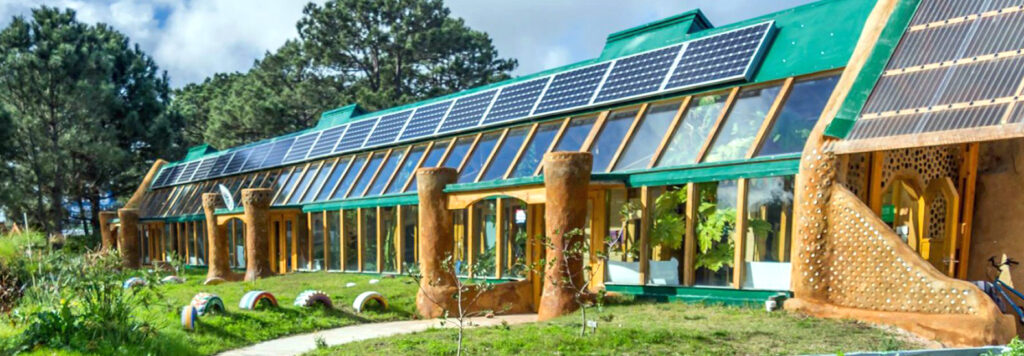
While the Earthship concept offers numerous benefits, it is not without its challenges. Early models faced issues such as condensation, inadequate ventilation, and difficulty in obtaining building permits. However, Reynolds and his team have continuously refined their designs, addressing these challenges through innovation and adaptation. One significant advancement has been the development of the “Global Model Earthship,” which incorporates lessons learned from earlier prototypes. This model features improved ventilation systems, enhanced water management, and greater adaptability to different climates and regions. Additionally, Earthships have evolved to include modern amenities and comforts, making them more appealing to a broader audience.
Reynolds has also been proactive in addressing regulatory and bureaucratic challenges. He has worked with local and international authorities to develop building codes and standards that accommodate Earthship designs. These efforts have helped to legitimize Earthships and facilitate their adoption in various regions. Despite these advancements, building Earthships can still be labor-intensive and time-consuming, requiring significant manual labor and expertise in unconventional construction techniques.
Case Studies and Regional Adaptations



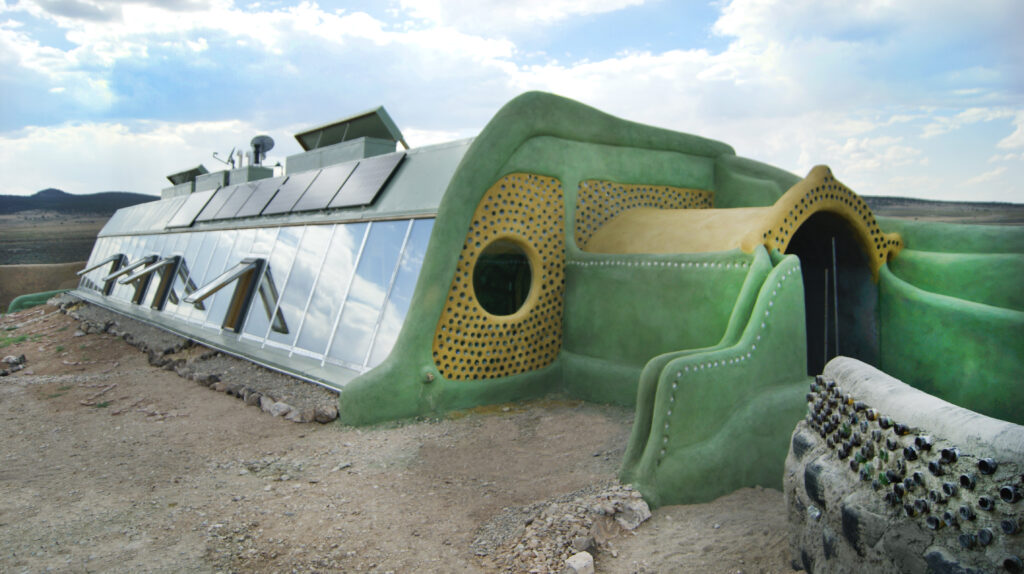
- Taos, New Mexico: The Earthship Community
The Earthship community in Taos, New Mexico, serves as the heart of the Earthship movement. Located in the Greater World Earthship Community, this area is home to numerous Earthships, each demonstrating different aspects of sustainable living. The community serves as a living laboratory for Earthship design and construction, hosting workshops, tours, and educational programs. Visitors and residents alike can experience firsthand the benefits and challenges of Earthship living. - Earthships in Canada: Adapting to Cold Climates
Earthships have been adapted for cold climates, such as those in Canada. These adaptations include enhanced insulation, triple-glazed windows, and modified ventilation systems to ensure adequate heating and air quality during harsh winters. Canadian Earthships demonstrate that the principles of sustainable living can be applied in diverse environmental conditions. The Earthship Biotecture team has worked closely with local builders and residents to ensure that these adaptations meet the specific needs of cold climate regions. - Earthships in Australia: Addressing Drought and Heat
In Australia, Earthships have been designed to cope with extreme heat and frequent droughts. Features such as deep overhangs, shading devices, and advanced water management systems help Earthships remain comfortable and functional in the hot, dry Australian climate. These adaptations highlight the versatility of the Earthship design and its ability to provide sustainable solutions in various environmental contexts. Australian Earthships often incorporate native plants and materials, further enhancing their ecological integration. - Earthships in Europe: Navigating Regulations and Historical Contexts
European Earthships face unique challenges related to stringent building regulations and the preservation of historical landscapes. Despite these obstacles, Earthships have been successfully constructed in countries such as the United Kingdom, France, and the Netherlands. These projects often involve extensive collaboration with local authorities and communities to ensure compliance with regulations and respect for cultural heritage. European Earthships demonstrate the potential for sustainable architecture to coexist with historical and cultural contexts.
Global Impact and Community Building
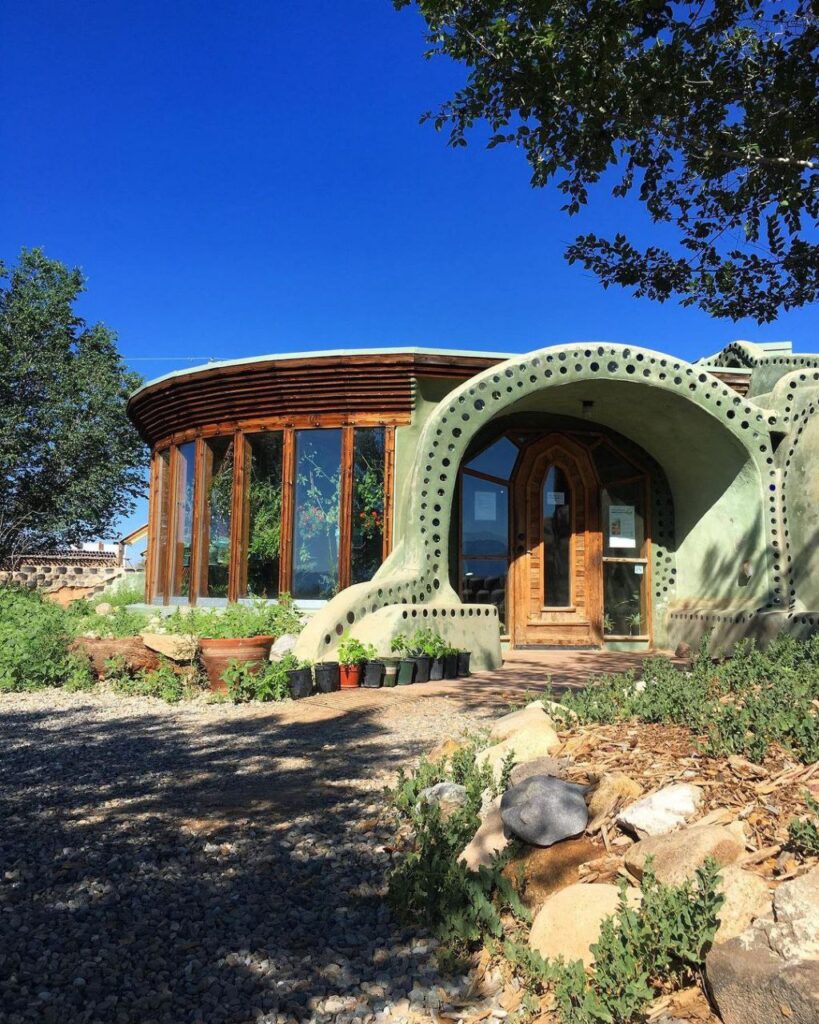

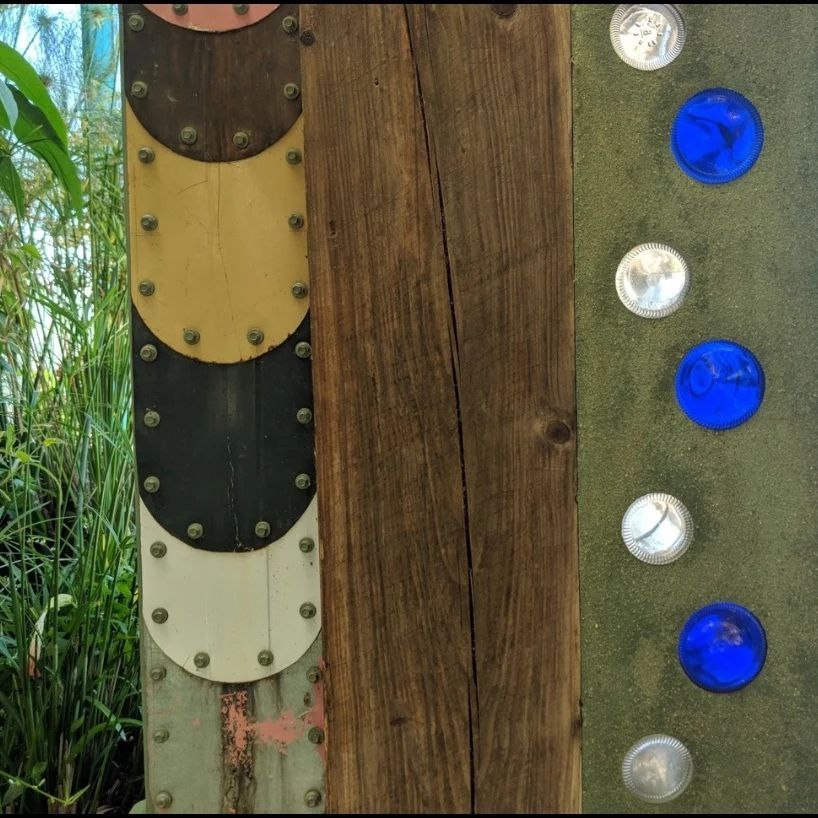

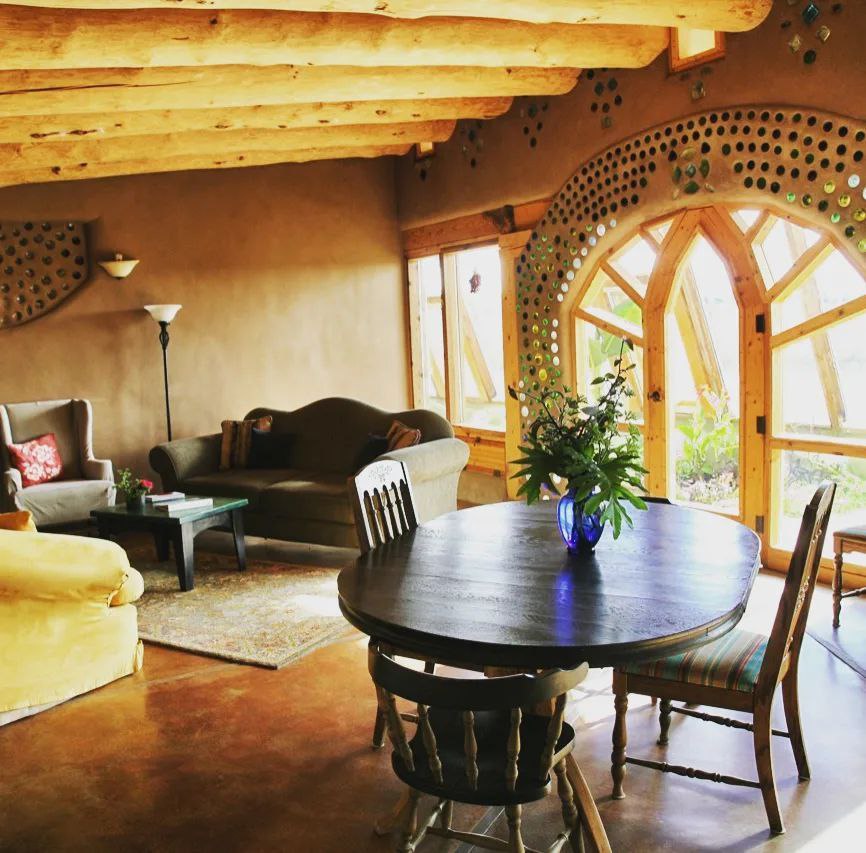
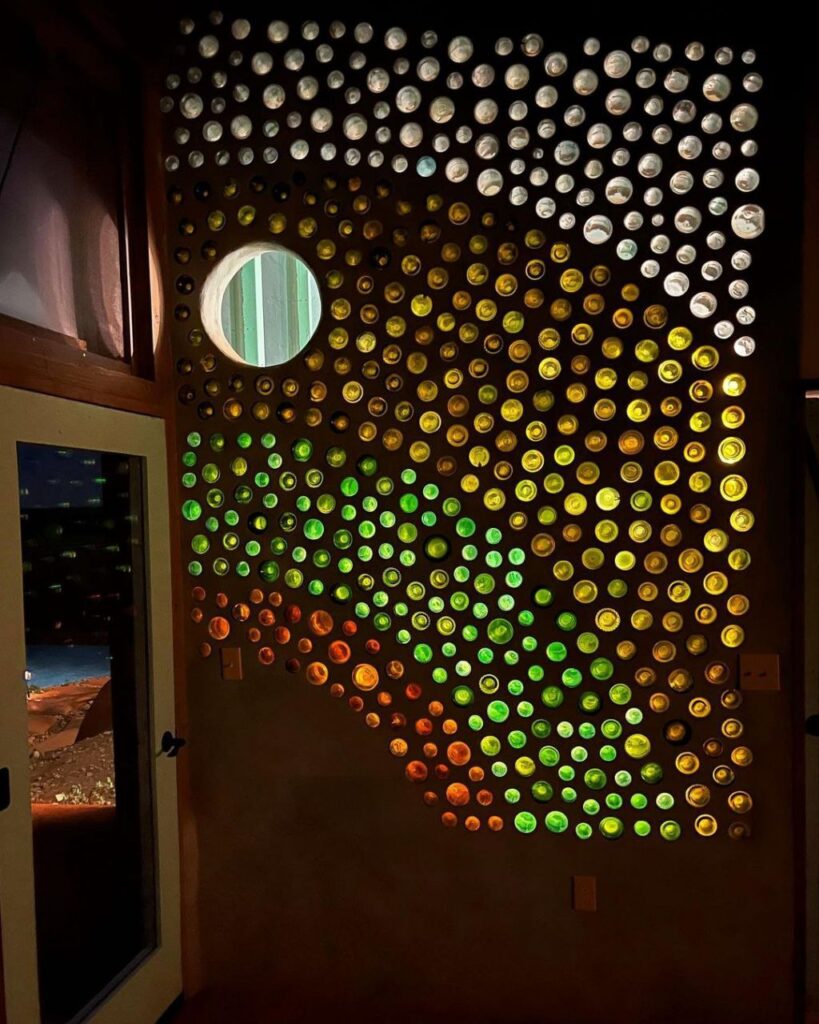

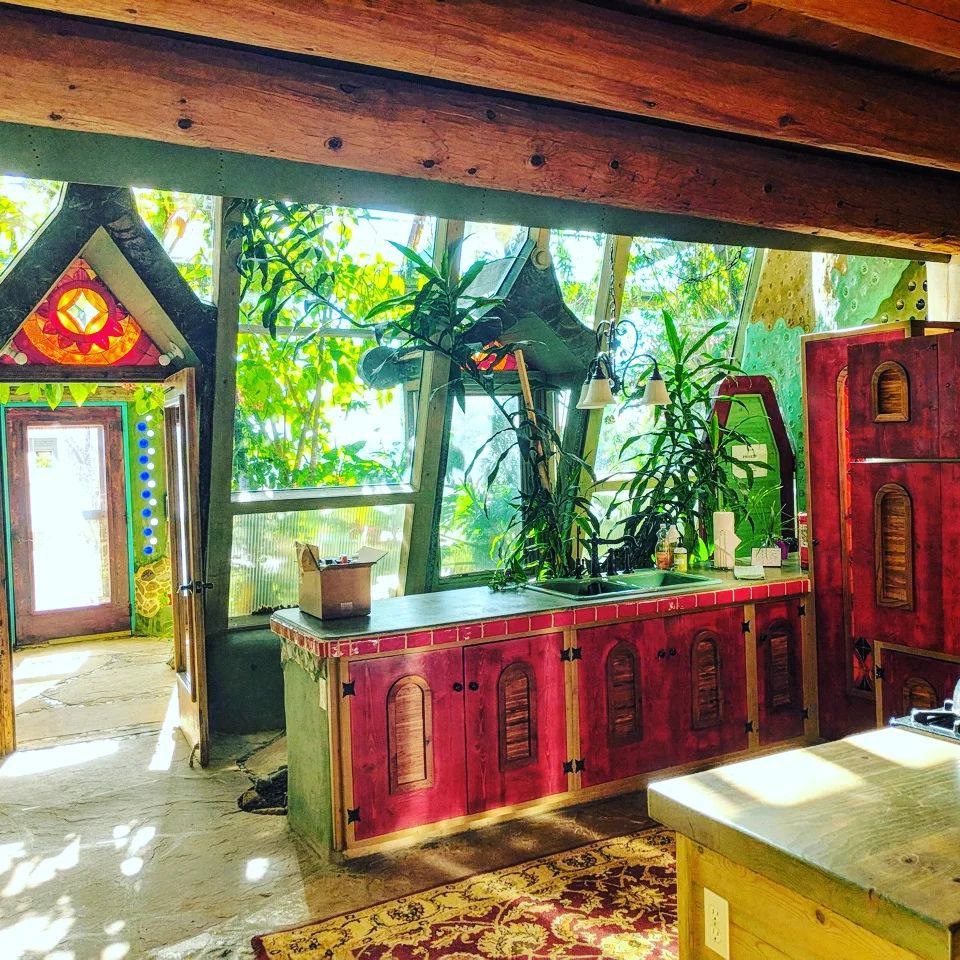
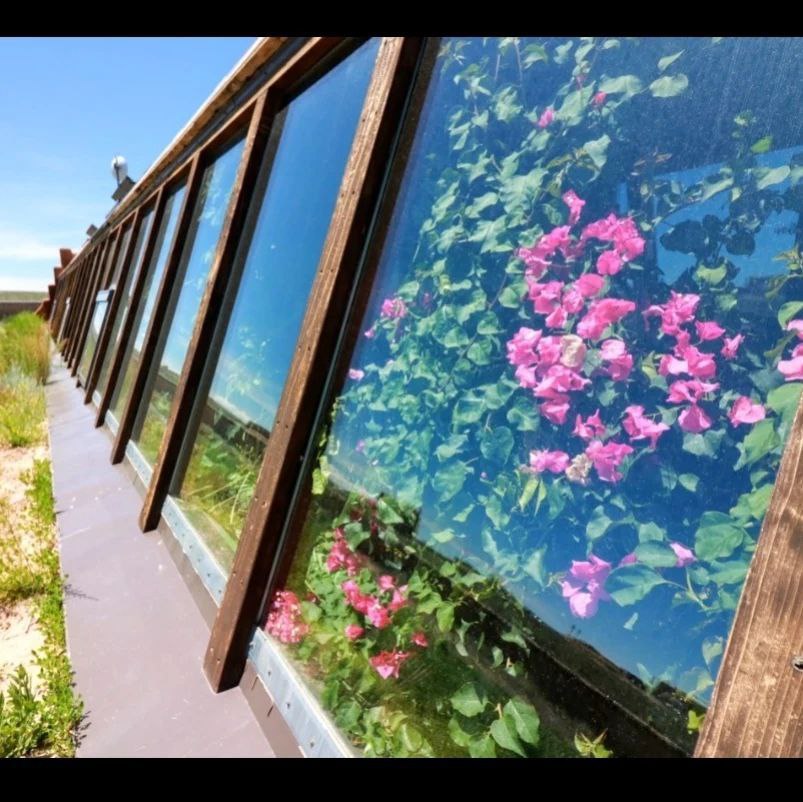
Michael Reynolds’ Earthship concept has garnered international attention, inspiring sustainable building projects worldwide. Earthship communities have sprung up in countries such as Canada, Australia, the United Kingdom, and Argentina, each adapted to local climates and cultural contexts. In addition to residential buildings, Earthships have been used for schools, community centers, and emergency shelters. Their resilience and self-sufficiency make them ideal for disaster-prone areas, providing a sustainable solution for housing in the wake of natural disasters.
Reynolds has also established the Earthship Biotecture Academy, offering training programs for individuals interested in learning about sustainable building practices. The academy attracts students from around the globe, fostering a community of like-minded individuals committed to promoting and advancing the Earthship movement. The curriculum covers all aspects of Earthship construction and maintenance, from basic principles to advanced techniques. Graduates of the academy often go on to build Earthships in their own communities, further spreading the principles of sustainable living.
Educational Initiatives and Outreach
- Earthship Biotecture Academy
The Earthship Biotecture Academy provides comprehensive training in sustainable building practices. The program includes hands-on construction experience, classroom instruction, and fieldwork. Students learn about the core principles of Earthship design, as well as practical skills such as plumbing, electrical work, and renewable energy installation. The academy’s holistic approach ensures that graduates are well-equipped to build and maintain Earthships. - Workshops and Seminars
In addition to the academy, Earthship Biotecture offers workshops and seminars for individuals and groups interested in sustainable living. These events cover topics such as permaculture, renewable energy, and natural building materials. Participants gain practical knowledge and skills that they can apply in their own homes and communities. The workshops also serve as a platform for networking and collaboration among sustainability enthusiasts. - Community Outreach Programs
Earthship Biotecture is committed to raising awareness about sustainable living through community outreach programs. These initiatives include school presentations, public lectures, and community building projects. By engaging with diverse audiences, Earthship Biotecture aims to inspire and empower individuals to adopt more sustainable lifestyles. The outreach programs emphasize the importance of environmental stewardship and the role of individuals in creating a more sustainable future.
Criticism and Controversy

Despite their many advantages, Earthships have faced criticism from some quarters. Detractors argue that the use of tires and other waste materials can pose environmental and health risks if not properly managed. Others contend that the initial cost of building an Earthship can be prohibitive for many people, limiting their accessibility. Reynolds has addressed these concerns by emphasizing the importance of proper construction techniques and ongoing maintenance. He also advocates for policy changes that would make it easier for individuals to obtain permits and financing for Earthship projects. By promoting education and awareness, Reynolds hopes to overcome these obstacles and make Earthships a viable option for a wider population.
Critics also point to the labor-intensive nature of Earthship construction and the challenges of integrating Earthship principles into urban environments. While Earthships are ideally suited to rural and off-grid locations, adapting the design for urban settings requires innovative solutions to address issues such as space constraints and municipal infrastructure. Despite these challenges, Reynolds remains optimistic about the potential for Earthships to contribute to urban sustainability.
Innovations and Future Directions
Michael Reynolds continues to innovate and evolve the Earthship concept, exploring new materials, technologies, and design strategies. His ongoing research and experimentation aim to enhance the efficiency, affordability, and adaptability of Earthships. Some recent innovations include:
- Advanced Water Filtration Systems
New developments in water filtration technology are being integrated into Earthship designs, improving the quality and safety of harvested rainwater. These systems use multi-stage filtration processes to remove contaminants and ensure that water meets health and safety standards. - Energy Storage Solutions
Advances in battery technology and energy storage systems are enhancing the reliability and efficiency of Earthship renewable energy systems. New energy storage solutions provide greater capacity and longer lifespans, ensuring a consistent supply of electricity even during periods of low sunlight or wind. - Modular and Prefabricated Earthships
To address the challenges of labor-intensive construction and high initial costs, Reynolds and his team are developing modular and prefabricated Earthship components. These components can be manufactured off-site and assembled quickly on-site, reducing construction time and labor requirements. - Urban Earthships
Efforts to adapt Earthship principles for urban environments include designs for multi-story Earthships, retrofitting existing buildings with Earthship features, and integrating Earthships into urban planning and development projects. These initiatives aim to bring the benefits of sustainable living to urban populations. - Collaborations and Partnerships
Earthship Biotecture is collaborating with universities, research institutions, and other organizations to advance the science and practice of sustainable building. These partnerships support research, innovation, and the dissemination of Earthship principles to a wider audience.
The Broader Implications of Earthships
The Earthship concept has far-reaching implications for sustainable living and architectural practices. By challenging conventional building methods and advocating for self-sufficiency, resilience, and minimal environmental impact, Michael Reynolds has inspired a global movement towards more sustainable and responsible living. The principles and practices embodied in Earthships offer a hopeful and practical path forward in the face of climate change, resource depletion, and environmental degradation.
Earthships demonstrate that it is possible to create buildings that are not only environmentally friendly but also beautiful, functional, and self-sustaining. They provide a model for how we can live in harmony with nature, using renewable resources and minimizing waste. The success of Earthships also highlights the importance of innovation, experimentation, and collaboration in addressing the environmental challenges of our time.
Conclusion
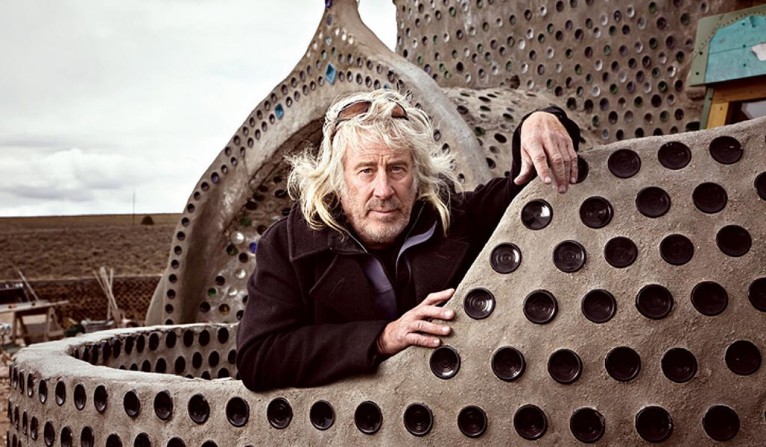
Michael Reynolds and his Earthship concept represent a bold and innovative approach to sustainable living and ecohousing. By challenging conventional building practices and advocating for self-sufficiency, resilience, and minimal environmental impact, Reynolds has inspired a global movement towards more sustainable and responsible living.
Earthships are more than just buildings; they are a testament to the potential for human ingenuity and creativity to address the pressing environmental challenges of our time. As we continue to grapple with the consequences of climate change and resource depletion, the principles and practices embodied in Earthships offer a hopeful and practical path forward.
In celebrating the work of Michael Reynolds, we are reminded that the future of architecture and housing lies not in grandiose designs or technological marvels, but in the humble, earth-bound principles of sustainability, resilience, and respect for our natural world. Through Earthships, Reynolds has shown us that a sustainable future is not only possible but within our grasp, if we are willing to rethink and reimagine the way we live and build.
Appendix: Detailed Case Studies
1. The Greater World Earthship Community (Taos, New Mexico)
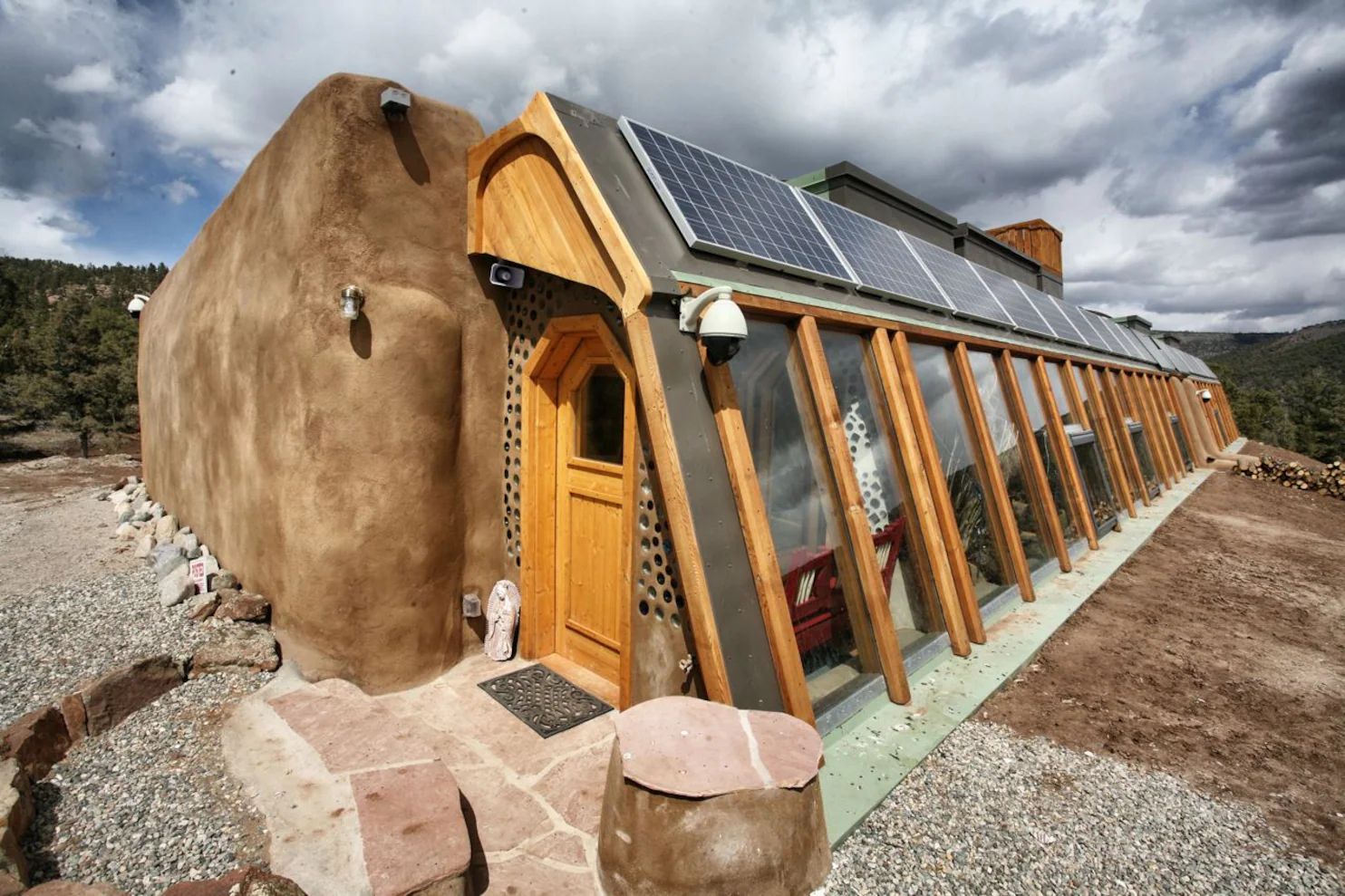
The Greater World Earthship Community in Taos, New Mexico, serves as the epicenter of the Earthship movement. Established in the early 1990s, this community is home to numerous Earthships, each showcasing different aspects of sustainable living. The community spans over 634 acres and is designed to be completely off-grid, utilizing solar and wind energy, rainwater harvesting, and integrated food production systems.
Residents of the Greater World Earthship Community live in harmony with their environment, growing their own food, generating their own energy, and managing their own waste. The community hosts regular tours, workshops, and educational programs, attracting visitors and students from around the world. These events provide valuable insights into the practicalities of Earthship living and inspire participants to adopt more sustainable lifestyles.
2. Fife Earthship (Scotland)

The Fife Earthship in Scotland is a notable example of Earthship design adapted for a cold, wet climate. Constructed in the late 1990s, this Earthship features enhanced insulation, triple-glazed windows, and a sophisticated ventilation system to maintain comfortable indoor temperatures throughout the year. The Fife Earthship also incorporates a reed bed system for greywater treatment and a composting toilet for waste management.
This project was developed in collaboration with the Sustainable Communities Initiative, a Scottish environmental organization. The Fife Earthship serves as a demonstration project, showcasing the feasibility of Earthship principles in the UK and providing a valuable educational resource for sustainable building practices.
3. The Brighton Earthship (United Kingdom)
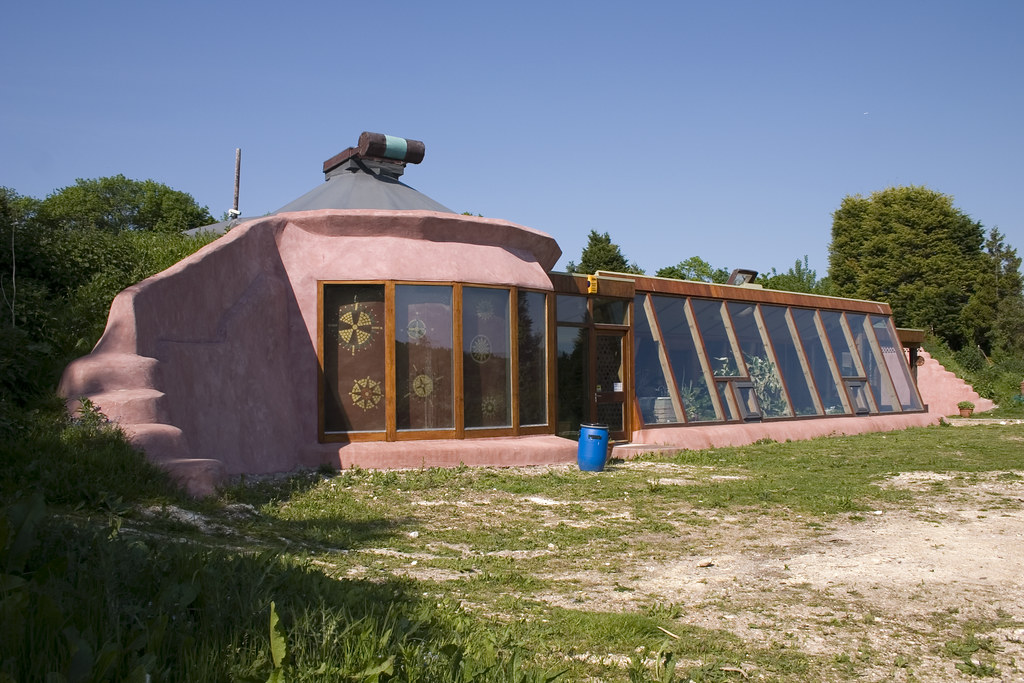
The Brighton Earthship, located in Stanmer Park near Brighton, England, is another exemplary project that highlights the adaptability of Earthship design to different environmental conditions. Completed in 2006, the Brighton Earthship was built as a community center and environmental education facility.
This Earthship features a range of sustainable technologies, including rainwater harvesting, solar and wind power, and a living roof. The project was developed by the Low Carbon Trust, a UK-based environmental charity, and serves as a hub for sustainability education and community engagement. The Brighton Earthship hosts workshops, tours, and events, providing a platform for learning and collaboration.
4. The Earthship Village Ecologies (EVE) Project (New Mexico)
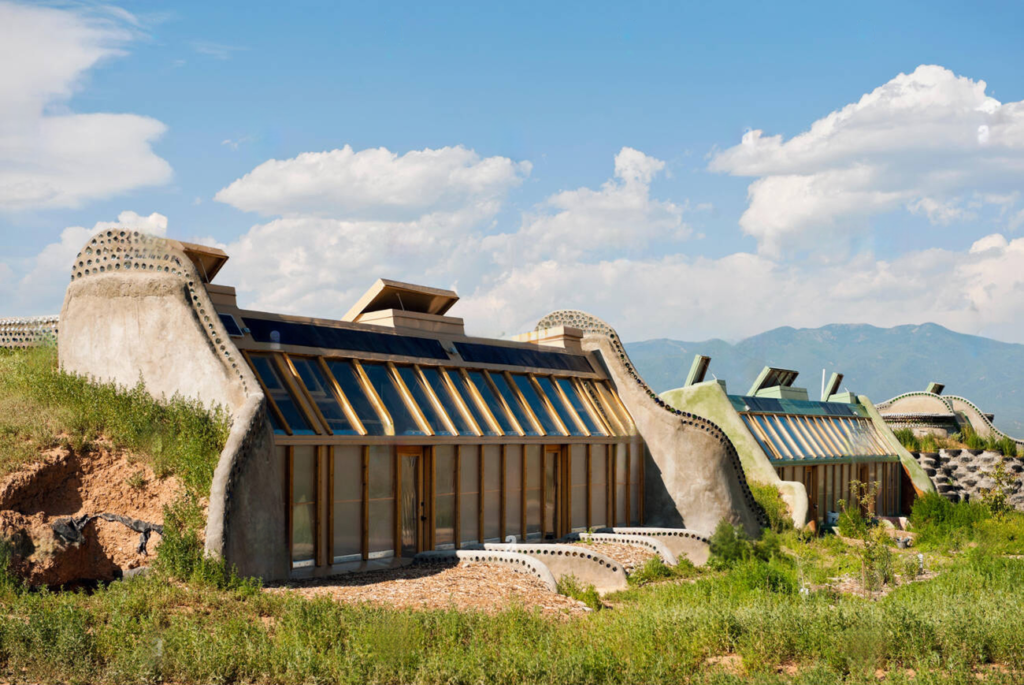
The Earthship Village Ecologies (EVE) Project in New Mexico is an ambitious initiative aimed at creating a sustainable village prototype. This project involves the construction of multiple Earthships, each serving different functions such as residential, agricultural, and commercial spaces. The goal of the EVE Project is to demonstrate how Earthship principles can be scaled up to create self-sustaining communities.
The EVE Project incorporates advanced water and energy systems, extensive food production facilities, and innovative waste management solutions. By integrating these systems into a cohesive community design, the EVE Project aims to provide a blueprint for sustainable village development.
Conclusion and Future Directions
The case studies presented here illustrate the versatility and adaptability of Earthship design. From the arid deserts of New Mexico to the temperate climates of Scotland and the United Kingdom, Earthships have proven their ability to provide sustainable living solutions in diverse environmental conditions. These projects also highlight the importance of community engagement, education, and collaboration in promoting sustainable living practices.
As we look to the future, the principles and practices embodied in Earthships offer valuable lessons for addressing the environmental challenges of our time. Michael Reynolds’ vision of self-sufficient, resilient, and environmentally harmonious living continues to inspire individuals and communities worldwide. By embracing these principles, we can move towards a more sustainable and equitable future, where our buildings and lifestyles are in harmony with the natural world.

